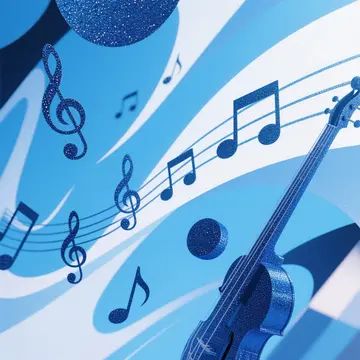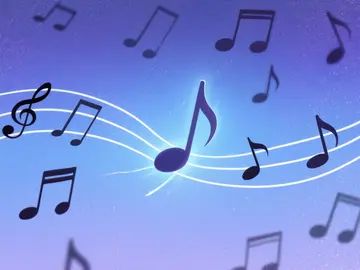Introduction
Imagine typing "sad piano ballad in the style of Chopin" and getting a fully composed piece in seconds. This magic is powered by text-to-music models, one of the most fascinating applications of AI in creativity.
But how exactly does artificial intelligence transform words into melodies, harmonies, and even full arrangements? This article peels back the layers to reveal:
The key technologies that make it possible
The training process behind music-generating AI
Current limitations and breakthroughs

The 3 Core Technologies Behind Text-to-Music AI
1. Natural Language Processing (NLP)
What it does: Interprets text prompts (e.g., "funky bassline with synth arpeggios")
How it works:
Uses models like GPT-4 to understand musical descriptors
Converts words into embeddings (numerical representations of meaning)
Recognizes style references ("in the style of Daft Punk")
2. Neural Audio Synthesis
What it does: Generates actual audio waveforms
Key approaches:
Diffusion models (like Stable Audio): Build sound gradually from noise
Transformer-based (like MusicLM): Predicts audio sequences note-by-note
GANs (Generative Adversarial Networks): Pit two neural networks against each other for realism
3. Music Information Retrieval (MIR)
What it does: Ensures musical coherence
Functions:
Maintains consistent tempo/key
Balances melody/harmony/rhythm relationships
Applies music theory rules (avoiding dissonant intervals)
Step-by-Step: From Text Prompt to Finished Track
Prompt Processing
Genre (80s pop)
Instruments (synths, drums)
Attributes (upbeat, sparkling, punchy)
Input: "Upbeat 80s pop with sparkling synths and punchy drums"
AI extracts:
Latent Space Mapping
Matches descriptors to learned musical patterns
Retrieves similar "concepts" from training data
Music Generation
Chord progression (e.g., I-V-vi-IV)
Melody (catchy hook in C major)
Arrangement (intro-verse-chorus structure)
Creates:
Audio Rendering
Converts digital notes to realistic instrument sounds
Adds production effects (reverb, EQ)
Output Delivery
Audio file (WAV/MP3)
Sometimes MIDI/stems for editing
Provides:
How These Models Are Trained
The Dataset
Millions of audio tracks with metadata:
Genre tags
Instrumentation labels
Mood descriptors
Training Process
Pre-training: Learns general music patterns
Fine-tuning: Specializes in specific styles
Alignment: Ensures text prompts match outputs
Key Challenge: Avoiding copyright infringement while maintaining creativity.
Current Limitations
| Challenge | Why It's Hard | Emerging Solutions |
|---|---|---|
| Long-form structure | AI loses coherence past 3-4 minutes | Memory-augmented transformers |
| Vocal generation | Lyrics/voice synthesis is complex | Models like Voicebox (Meta) |
| Emotional nuance | Hard to quantify "sad" or "epic" | Emotion-annotated datasets |
Real-World Applications
1. Music Prototyping
Composers generate draft ideas 10x faster
2. Game Development
Dynamic soundtracks adapt to player actions
3. Therapeutic Uses
AI composes calming music for meditation
The Future: Where This Technology Is Headed
Interactive generation: Change music in real-time with voice commands
Style transfer: Transform pop songs into jazz arrangements instantly
AI collaborators: Systems that suggest improvements to human compositions
Try It Yourself
Free Tools to Experiment With:
Conclusion
Text-to-music models represent an extraordinary fusion of art and artificial intelligence. While they still can't replicate human composers' full creativity, they've become indispensable tools for:
?? Democratizing music creation
?? Accelerating workflows
?? Exploring new sonic possibilities
As these models evolve, we're moving toward a future where anyone can express themselves musically—no instruments required.



